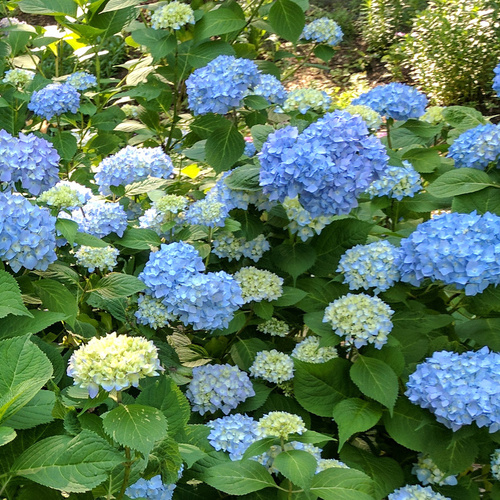Today we’re visiting Chris Cloutier’s garden in northern Michigan.
I have been gardening for almost 50 years. I started with indoor plants—lots and lots of them in a very small studio apartment in downtown Detroit. Then I moved into a home built in 1948 just outside of Detroit with a yard that was totally unkempt. I was very much a beginner but was so lucky to have the darkest, richest soil that I have ever had. Everything, including corn, grew amazingly. Then, after seven years, we moved again into a new subdivision that had been an apple orchard, but the soil was completely stripped. I had solid, stinky, sticky clay. I used raised beds, made lots of compost, and did everything I could think of to enrich the earth. I had a lovely English-type garden and learned over time what could thrive in clay and what couldn’t. After 32 years we left the clay and moved to the Leelanau Peninsula, just outside of Traverse City. We bought another home where absolutely no gardening had ever been done. The house is surrounded by Lake Michigan sand dunes filled with wild raspberries that were about to take over the house. Besides pure sand, I also garden in dense shade with only some morning sun. But I’ve been gardening here for 11 years, and despite still pulling a few raspberries every spring, and having a couple of slips down the sandy hills, I have a beautiful, peaceful garden.
 A huge bigleaf hydrangea (Hydrangea macrophylla, Zones 5–10) is loaded down with beautiful blue flowers.
A huge bigleaf hydrangea (Hydrangea macrophylla, Zones 5–10) is loaded down with beautiful blue flowers.
 That color is just incredible.
That color is just incredible.
 In a shady corner, a basket of impatiens (Impatiens walleriana, annual) join some hostas (Hosta hybrids, Zones 3–9).
In a shady corner, a basket of impatiens (Impatiens walleriana, annual) join some hostas (Hosta hybrids, Zones 3–9).
 At the edge of the woodland, thriving in the sandy soil, is a mix of annuals and perennials in warm shades of red and yellow.
At the edge of the woodland, thriving in the sandy soil, is a mix of annuals and perennials in warm shades of red and yellow.
 A mix of different ferns, with the silvery fronds of Japanese painted fern (Athyrium niponicum var. pictum, Zones 3–8) taking center stage.
A mix of different ferns, with the silvery fronds of Japanese painted fern (Athyrium niponicum var. pictum, Zones 3–8) taking center stage.
 A hanging basket of New Guinea impatiens (Impatiens hawkeri, annual) brings a pop of intense red color next to the black-eyed Susans (Rudbeckia fulgida, Zones 3–10).
A hanging basket of New Guinea impatiens (Impatiens hawkeri, annual) brings a pop of intense red color next to the black-eyed Susans (Rudbeckia fulgida, Zones 3–10).
Have a garden you’d like to share?
Have photos to share? We’d love to see your garden, a particular collection of plants you love, or a wonderful garden you had the chance to visit!
To submit, send 5-10 photos to [email protected] along with some information about the plants in the pictures and where you took the photos. We’d love to hear where you are located, how long you’ve been gardening, successes you are proud of, failures you learned from, hopes for the future, favorite plants, or funny stories from your garden.
If you want to send photos in separate emails to the GPOD email box that is just fine.
Have a mobile phone? Tag your photos on Facebook, Instagram or Twitter with #FineGardening!
You don’t have to be a professional garden photographer – check out our garden photography tips!
Do you receive the GPOD by email yet? Sign up here.
